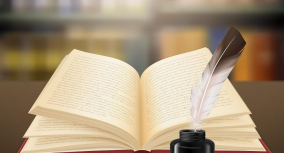A visual analysis essay is an academic paper type that history and art students often deal with. It consists of a detailed description of an image or object. It can also include an interpretation or an argument that is supported by visual evidence.

In this article, our custom writing experts will:
- explain what a visual analysis is;
- share useful tips on how to write a good visual analysis essay;
- provide an essay sample.
🎨 What Is a Visual Analysis?
The primary objective of visual analysis is to understand an artwork better by examining the visual elements. There are two types of visual analysis: formal and contextual.
- A formal analysis focuses on artwork elements such as texture, color, size, and line. It aims to organize visual information and translate it into words. A formal analysis doesn’t interpret the piece.
- Unlike formal analysis, contextual analysis’ primary goal is to connect artwork to its purpose or meaning within a culture. A contextual analysis includes formal analysis. Additionally, it discusses an artwork’s social purpose and significance.
Usually, students deal with formal visual analysis. Before starting to work on your essay, make sure to ask your professor whether to include contextual analysis or not.
The Purpose of Analyzing Images
Why is visual analysis important? What does it help to learn? There are several things that visual analysis helps with:
- It allows students to enhance their appreciation of art.
- It enables students to develop the ability to synthesize information.
- It encourages students to seek out answers instead of simply receiving them.
- It prompts higher-order critical thinking and helps to create a well-reasoned analysis.
- By conducting visual analysis, students learn how to support and explain their ideas by studying visual information.
What Is Formal Analysis: Art History
When we look at an artwork, we want to know why it was created, who made it, and what its function was. That’s why art historians and researchers pay special attention to the role of artworks within historical contexts.
Visual analysis is a helpful tool in exploring art. It focuses on the following aspects:
- Interpretation of subject matter (iconography). An iconographic analysis is an explanation of the work’s meaning. Art historians try to understand what is shown and why it is depicted in a certain way.
- The analysis of function. Many works of art were designed to serve a purpose that goes beyond aesthetics. Understanding that purpose by studying their historical use helps learn more about artworks. It also establishes a connection between function and appearance.
Formal Analysis: Art Glossary
Now, let’s look at some visual elements and principles and learn how to define them.
Visual Elements:
Visual Principles:
🏺 How to Analyze Artworks: Different Types
Writing a formal analysis is a skill that requires practice. Being careful and attentive during the pre-writing stage is essential if you want to create a good and well-structured visual analysis.
Visual analysis essay mainly consists of two components:
- Description of the selected image or object,
- Interpretation built on the visual evidence.
During the pre-writing stage:
- Collect general information about an artwork. Describe it briefly. Pay special attention to visual elements and principles:
- Develop an interpretation. Think critically. What does the information in your notes imply? How can it be interpreted?
- Support your ideas. To do it, refer to the visual elements directly. Avoid generalizing art and double-check your prompts.
How to Analyze a Painting Using the Elements of Art
To write an excellent formal visual analysis, you need to consider as many visual principles and elements as you can apply. In the formal analysis part:
- Target your description;
- Address only those elements relevant to your essay;
- Pay attention to visual elements and principles;
- Introduce the subject of the painting and describe it;
- Explain why you have decided to discuss specific elements;
- Discuss the relationship between visual elements of the artwork;
- Use the vocabulary terms.
If you are asked to do a contextual analysis, you may want to:
- Focus on the historical importance of an artwork;
- Explore the style or movement associated with an artwork;
- Learn about the historical context and the public’s reaction to the artwork;
- Learn about the author and how they’ve created the piece of art.
Painting Analysis Essay Example & Tips
Here is a template you can use for your essay.
Now, let’s take a look at an essay example.
How to Analyze a Photograph
Analyzing photos has a lot in common with paintings. There are three methods on which photo visual analysis relies: description, reflection, and formal analysis. Historical analysis can be included as well, though it is optional.
- Description. It implies looking closely at the photo and considering all the details. The description needs to be objective and consists of basic statements that don’t express an opinion.
- Reflection. For the next step, focus on the emotions that the photograph evokes. Here, every viewer will have a different opinion and feelings about the artwork. Knowing some historical context may be helpful to construct a thoughtful response.
- Formal analysis. Think of the visual elements and principles. How are they represented in the photograph?
- Historical analysis. For a contextual analysis, you need to pay attention to the external elements of the photograph. Make sure that you understand the environmental context in which the photo was taken. Under what historical circumstances was the picture made?
Photo Analysis Essay Tips
Now that we’ve talked about analyzing a photograph let’s look at some helpful tips that will help you write an essay.
How to Analyze a Sculpture
Visual analysis of a sculpture is slightly different from the one of a painting or a photograph. However, it still uses similar concepts, relies on visual elements and principles. When you write about sculpture, consider:
Visual Analysis Essay on a Sculpture: Writing Tips
A sculpture analysis consists of the following parts:
- Description. Include specific details, such as what the sculpture may represent. For instance, the human figure may be an athlete, an ancient God, a poet, etc. Consider their pose, body build, and attire.
- Formal analysis. Here, visual elements and principles become the focus. Discuss the color, shape, technique, and medium.
- Contextual analysis. If you decide to include a contextual analysis, you can talk about the sculpture’s function and how it conveys ideas and sentiments of that period. Mention its historical and cultural importance.
When it comes to sculpture analysis, you may also want to collect technical data such as:
- The size of the sculpture
- Medium (the material)
- The current condition (is it damaged, preserved as a fragment, or as a whole piece)
- Display (Was a sculpture a part of an architectural setting, or was it an independent piece of work?)
For instance, if you were to do a visual analysis of Laocoön and His Sons, you could first look up such details:
Example:
- Location: Discovered in a Roman vineyard in 1506
- Current location: Vatican
- Date: Hellenistic Period (323 BCE – 31 CE)
- Size: Height 208 cm; Width 163 cm; Depth 112 cm
- Material: Marble
- Current condition: Missing several parts.
Visual Analysis Essay: Advertisement Analysis
Visuals are used in advertisements to attract attention or convince the public that they need what is being advertised. The purpose of a visual argument is to create interest. Advertisements use images to convey information and communicate with the audience.
When writing a visual analysis of an advertisement, pay attention to the following:
- text elements,
- font,
- illustrations,
- composition.
All of this influences how the viewer perceives the information and reacts to it.
When you write about an advertisement, you conduct a rhetorical analysis of its visual elements. Visual rhetoric is mainly directed at analyzing images and extracting information from them. It helps to understand the use of typography, imagery, and the arrangement of elements on the page.
Think of the famous visual rhetoric examples such as the We can do it! poster or a Chanel №5 commercial. Both examples demonstrate how persuasive imagery has been used throughout history.
How to Write a Visual Analysis Paper on an Advertisement
The presentation of visual elements in advertising is essential. It helps to convince the audience. When you analyze visual arguments, always keep the rhetorical situation in mind. Here are some crucial elements to focus on:
✅ How to Write a Visual Analysis Paper: Step by Step
Now, we’ll focus on the paper itself and how to structure it. But first, check out the list of topics and choose what suits you best.
Visual Analysis Essay Topics
There are a lot of artworks and advertisements that can be analyzed and viewed from different perspectives. Here are some essay topics on visual analysis that you may find helpful:
Painting:
- Analyze Gustav Klimt’s The Kiss (1907-1908.)
- The theme of humanity and The Son of Man (1964) by René Magritte.
- The use of visual elements in Almond Blossom by Vincent van Gogh (1888-1890.)
- Identity and Seated Harlequin (1901) by Picasso.
- Explore the themes of Paul Klee’s The Tree of Houses, 1918.
- Reflection on social issues of the time in Two Fridas by Frida Kahlo and Untitled by Ramses Younan.
- Analyze the importance of Mural (1943) by Jackson Pollock.
- The political message in John Gast’s painting American Progress (1872).
- Describe the visual techniques used in Toy Pieta by Scott Avett.
- The interpretation of the painting Indian Fire God by Frederic Remington.
- Explore the historical significance and aesthetic meaning of Ognissanti Madonna by Giotto di Bondone.
- Analyze different interpretations of The Three Dancers by Pablo Picasso.
Photography:
- The idea behind Lindsay Key (1985) by Robert Mapplethorpe.
- Explore the mythical appeal of Robert Capa’s photograph The Falling Soldier (Spain,1936) from Death in Making photobook.
- Describe Two Boys with Fish (2018) from Faith series by Mario Macilau.
- Kevin Carter’s Starving Child and Vulture (1993) as the representation of photojournalism.
- The story behind Philippe Halsman’s Dali Atomicus, 1948.
- Analyse the view of a historic disaster in San Francisco photograph by George R. Lawrence.
- The statement behind Eddie Adams’s photo Shooting a Viet Cong Prisoner.
- How is Steve McCurry’s perception of the world reflected in his photo Afghanistan Girl.
- Analyze the reflection of Ansel Adams’s environmental philosophy in his photo Moon and Half Dome (1960).
- Describe Girl on the Garda Lake (2016) by Giuseppe Milo.
- Combination of internal geometry and true-to-life moments in Behind the Gare Saint Lazare by Henri Cartier-Bresson.
Sculpture:
- Modern art and Couple on Seat by Lynn Chadwick (1984.)
- Analyze the biblical context of Pieta (1498-1499) by Michelangelo.
- The use of shapes in Louise Bourgeois’ Spider (1996.)
- Analysis of the symbolism behind The Thinker (1880) by Rodin.
- The historical meaning of Fountain (1917) by Duchamp.
- Reflection of the civilization values in emperor Qin’s Terracotta Army.
- The aesthetic and philosophical significance of Michelangelo’s David.
- Explore the controversial meaning of Damien Hirst’s sculpture For the Love of God (2007).
- Analyze the elements of art and design used in The Thinker by August Rodin.
- Symbolic elements in the Ancient Greek statues of Zeus.
- Depiction of the fundamental aspects of Buddhism in The Parinirvana of Siddhartha/Shakyamuni.
Advertisement:
- How Volkswagen: Think Small (1960) ad changed advertising.
- Analyze the use of figures in California Milk Processor Board: Got Milk? (1993) ad campaign.
- Analyze the use of colors in Coca-Cola — The Pause that Refreshes (1931.)
- Explore the historical context of We Can Do It! (1942) campaign.
- The importance of a slogan in 1947: A Diamond Is Forever by De Beers.
- Describe the use of visual techniques in Kentucky Fried Chicken company’s advertisement.
- Analyze the multiple messages behind the print ad of JBL.
- Discuss the methods used in Toyota Highlander advertisement.
- Elucidation of people’s dependency on social networks in the advertising campaign Followers by Miller Lite.
- The use of the visual arguments in Schlitz Brewing Company advertisement.
- The role of colors and fonts in Viva la Juicy perfume advertisement.
Visual Analysis Essay Outline
You can use this art analysis template to structure your essay:

How to Start an Art Essay
Every analysis starts with an introduction. In the first paragraph, make sure that:
- the reader knows that this essay is a visual analysis;
- you have provided all the necessary background information about an artwork.
It’s also important to know how to introduce an artwork. If you’re dealing with a panting or a photograph, it’s better to integrate them into the first page of your analysis. This way, the reader can see the piece and use it as a reference while reading your paper.
Art Thesis Statement Examples & Tips
Formulating a thesis is an essential step in every essay. Depending on the purpose of your paper, you can either focus your visual analysis thesis statement on formal elements or connect it with the contextual meaning.
To create a strong thesis, you should relate it to an artwork’s meaning, significance, or effect. Your interpretation should put out an argument that someone could potentially disagree with.
- For instance, you can consider how formal elements or principles impact the meaning of an artwork. Here are some options you can consider:
- If your focus is the contextual analysis, you can find the connection between the artwork and the artist’s personal life or a historical event.
How to Write Visual Analysis Body Paragraphs
Body paragraphs of formal analysis consist of two parts—the description and the analysis itself. Let’s take Klimt’s The Kiss as an example:
The contextual analysis includes interpretation and evaluation.
Visual Analysis Essay Conclusion
When you work on the conclusion, try to conclude your paper without restating the thesis. At the end of your essay, you can present an interesting fact. You can also try to:
- Compare an artwork to similar ones;
- Contrast your own ideas on the piece with the reaction people had when it was first revealed.
- Talk about an artwork’s significance to the culture and art in general.
📑 Visual Analysis Essay Example & Citation Tips
In this section of the article, we will share some tips on how to reference an artwork in a paper. We will also provide an essay example.
How to Reference a Painting in an Essay
When you work on visual analysis, it is important to know how to write the title of an artwork properly. Citing a painting, a photograph, or any other visual source, will require a little more information than citing a book or an article. Here is what you will need:
- Size dimensions
- The medium
- Current location
- Name of the piece
- Artist’s name
- Date when artwork was created
If you want to cite a painting or an artwork you saw online, you will also need:
- The name of the website
- Website URL
- Page’s publication date
- Date of your access
How to Properly Credit an Artwork in APA
How to Properly Credit an Artwork in MLA
How to Properly Credit an Artwork in Chicago Format
Finally, here’s a sample visual analysis of Rodin’s sculpture The Thinker in APA format. Feel free to download it below.
Example:
Many people believe that works of art are bound to be immortal. Indeed, some remarkable masterpieces have outlived their artists by many years, gaining more and more popularity with time. Among them is The Thinker, a brilliant sculpture made by Auguste Rodin, depicting a young, athletic man, immersed deep into his thoughts.
You can also look at the following essay samples to get even more ideas.
Thanks for reading through our article! We hope you found it helpful. Don’t hesitate to share it with your friends.
Further reading:
❓ Visual Analysis FAQs
To write a visual argument essay, you need to use rhetorical analysis. Visual rhetoric is directed at analyzing images and extracting the information they contain. It helps to analyze the visuals and the arrangement of elements on the page.
A well-though contextual analysis will include:
1. formal analysis,
2. some information about the artist,
3. details on when and where the piece was created,
4. the social purpose of the work,
5. its cultural meaning.
It is better to include pictures in the introduction part of your paper. Make sure to cite them correctly according to the format you’re using. Don’t forget to add the website name, the URL, and the access date.
To analyze means not only to describe but also to evaluate and synthesize visual information. To do that, you need to learn about visual elements and principles and see how and why they are used within artworks.

![Critical Writing: Examples & Brilliant Tips [2024]](jpg/fingers-note-report-journalist-filling-284x153.jpg)




do you review and edit visual arts extended essay
Hello, Rani! Our experts can help you with any task